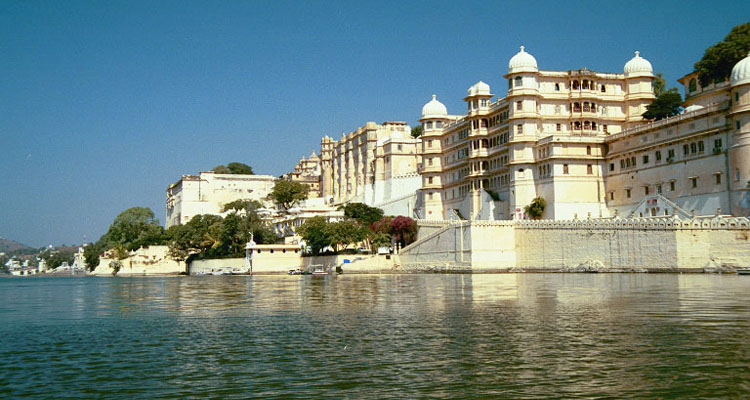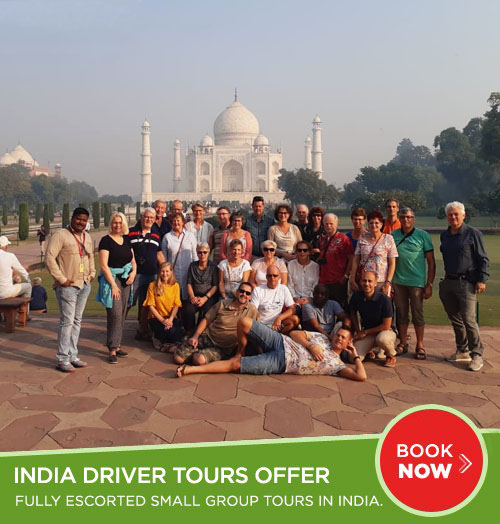Udaipur is famous for its lakes, palaces, forts, temples, gardens, and romantic backdrops. It was the setting of many movies, including the 13th James Bond film, Octopussy.

History
Udaipur, also known as the City of Lakes, is the crown jewel of the state of Rajasthan referred to as the ‘Venice of the East’, the city of lakes Udaipur is located around azure water lakes and is hemmed in by lush green hills of Aravallis. The famous Lake Palace, located in the middle of Lake Pichola is one of the most beautiful sights of Udaipur. It is also home to Jaisamand Lake, claimed to be the second largest man-made sweet water lake in Asia. The beautiful City Palace and Sajjangarh (Monsoon Palace) add to the architectural beauty and grandeur of the city. The city is also known for its profusion of zinc and marble. Solar observatory in Lake Fateh Sagar is the only observatory in India located on an island and has been made on the pattern of Big Bear Lake in Southern California. The ten-day Shilpgram Festival which starts from 21 Dec to 30 Dec pulls in a large number of people interested in arts and crafts.
Udaipur was founded in 1553 by Maharana Udai Singh II as the new capital of Mewar Kingdom. It is located in the fertile, circular Girwa Valley to the southwest of Nagda, which was the first capital of Mewar.
Places to visit in Udaipur
Udaipur Forts & Monuments
City Palace: City Palace towers over the Pichola Lake. Maharana Uday Singh initiated in the construction of the palace but succeeding Maharanas added several palaces and structures to the complex retained a surprising uniformity to the design. The entry to the Palace is from the Hati Pol, the Elephant gate. The Bari Pol or the Big gate brings you to the Tripolia, the Triple gate.
Fateh Prakash Palace: It’s like being cocooned in authentic royal luxury at the Fateh Prakash Palace, the grand heritage palace of the HRH group. The warmth of royal hospitality greets you as you walk along the corridors lined with large paintings of the Mewar school that flourished in the seventeenth through nineteenth century.
Durbar Hall: In India the Durbar Hall is generally a place where state banquets are held and is also used for formal and informal meetings. The Durbar Hall at the Fateh Prakash Palace is undoubtedly the most lavish Durbar Hall in India. It is one of the grandest chambers in Udaipur and its sheer size makes one gasp in awe.
Bagore ki Haveli: Bagore-ki-Haveli is located by Lake Pichola, at Gangaur Ghat. Amar Chand Badwa, the Prime Minister of Mewar, built it in the 18th century. The massive palace has over a hundred rooms that display costumes and modern art. The glass and mirrors in the interiors are structured in classical haveli style.
Maharana Pratap Memorial (MOTI MAGARI): An impressive bronze statue of Maharana Pratap and his favorite and loyal horse, who was fiercely protective about his master and stood by him till his last breath, stands at the top of Moti Magri (Pearl Mount) overlooking Fateh Sagar.
Haldighati: Haldighati is a famed mountain pass in the hills of the Aravalli Range. The pass, about 40 kilometres from Udaipur, connects the districts of Rajsamand and Pali. The pass gets its name from the yellow-coloured soil of the region (turmeric is called haldi in Hindi).
Museums
City museum: The main part of the palace is now preserved as a museum displaying a large and diverse array of artefacts. Down steps from the entrance is the armoury museum exhibiting a huge collection of protective gear, weapons including the lethal two-pronged sword. The City Palace museum is then entered through the Ganesh Deori meaning the door of Lord Ganesh. This leads to the Rajya Angan, the royal courtyard that is the very spot where Maharana Udai Singh met the sage who told him to find a city here.
Shilpgram: Literally meaning a “Craftsmen’s Village” is a living ethnographic museum depicting the enormous diversities in craft, art & culture between various Indian states, but the exquisite terracotta work mainly in dark red and dark brown sand material along with the wooden carvings are the forte of this ethnic village.
Ahar Museum: Ahar Museum is in close proximity to an impressive cluster of cenotaphs of the Maharanas of Mewar. The museum has a small, but rare collection of earthen pottery. You can also browse through sculptures and archaeological finds, a few dating back to 1700 BC. A 10th century metal figure of Buddha is a special attraction here.
Vintage Collection of Classic Car: The collection within the grounds of the Garden Hotel comprises a variety of classic and interestingly rare transportation vehicles; some stately and vintage like Cadalec, Chevalate, Morais etc., while the others are sleek and fast .The Maharanas of Udaipur once possessed and used these regal splendours of automobiles as their luxuries but most of the other models are gradually being added to the collection ,since it provides a unique aristocratic safari for the exclusive guests. Entry: Rs.80
Temples
Jag mandir: Jagmandir is a palace built on an island on the Lake Pichola. Also called the ‘Lake Garden Palace’, the construction for this began in 1620 and was completed around 1652. The royal family used the palace as its summer resort and for hosting parties. Interestingly, Prince Khurram – later Emperor Shah Jahan – was given shelter here when he rebelled against his father Emperor Jahangir. The Palace had such an impact on Emperor Shah Jahan that it went on to become the inspiration for one of the most magnificent Wonders of the World, The Taj Mahal.
Jagdish Mandir: An example of the Indo-Aryan style of architecture, Jagdish Temple was built in 1651 and continues to be one of the most famous temples in and around Udaipur. Dedicated to Lord Vishnu, the structure is an architectural marvel with carved pillars, graceful ceilings and painted walls. This three-storied temple was built by Maharana Jagat Singh.
Parks & Gardens
Sahelion Ki Bari: Maharana Sangram singh builds this in the mid 18th century. The ‘garden of the maidens’ brings to mind the lifestyle of the ladies of the court. The delightful gardens appear discreet and in impeccable taste. There are four pools with dainty kiosks, and all around are flowerbeds, lawns, pools and fountains protected by a series of walls and shady trees. The foundation of the Sahelion ki bari functions solely by water pressure and no pumps are used.
Lakes Picholi: Picholi was the name of a village that lent its name to the lake. The islands of Jagniwas and Jagmandir are housed in this lake. Along the eastern banks of the lake lies the City Palace. A boat ride in the lake around sunset offers a breathtaking view of the Lake and City Palace.
Jaisamand Lake: Jaisamand Lake is known for being the second largest man-made sweet water lake in Asia. It is popular among the locals as a weekend picnic destination. Locals say that the lake was constructed to halt the waters of Ruparel River. This lake boasts of a large island, which is home to various species of birds, at its centre.
Fateh Sagar Lake:This delightful lake, bordered by hills and woodlands, lies to the north of Lake Pichola. This artificial lake is connected to Lake Pichola by a canal. The lake houses the beautiful Nehru Island as well as an islet on which stands the Udaipur Solar Observatory. It was inaugurated by the Duke of Connaught and was initially called Connaught Bundh.
Rajsamand Lake: Jaisamand Lake is known for being the second largest man-made sweet water lake in Asia. It is popular among the locals as a weekend picnic destination. Locals say that the lake was constructed to halt the waters of Ruparel River. This lake boasts of a large island, which is home to various species of birds, at its centre.
How to Reach Udaipur
By Air
Maharana Pratap Airport or Dabok Airport is 24 km from the city centre, Dairy Indian Airliness flights connect Udaipur with Jodhpur Jaipur aurangbad, Mumbai and Delhi.
By Train
Udaipur is directly linked by rail with major cities some important train connection are : 9643 Express (Delhi SaraiRohilla-Jaipur-Ajmer-Chittaurgarh-Udaipur.)
By Road
A wide network of bus service link Udaipur with several destinations. Some of the important distance are Agra 630km, Ahmedabad 262 km Jaipur 406 km. Jodhpur 275km and Mount Abu 185km.


